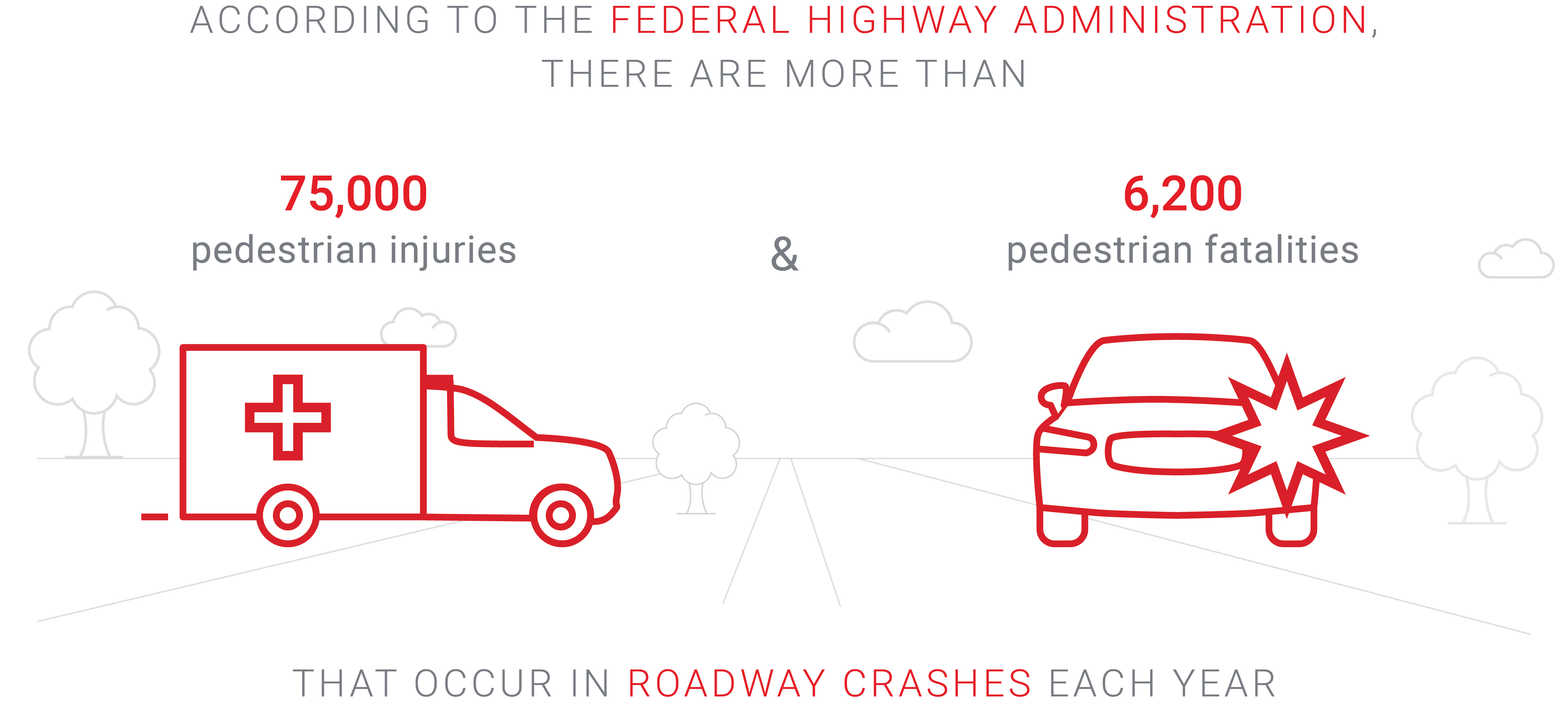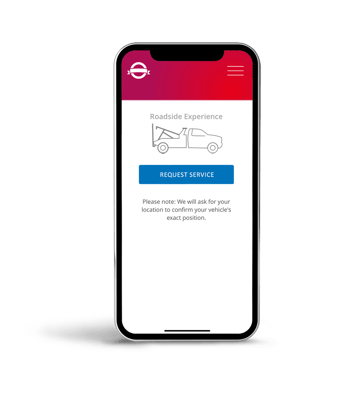Flat tires, jump starts, and tows are all common roadside events that a majority of drivers have either witnessed as they’re driving or experienced firsthand. But what’s also common (and frequently overlooked) are the major dangers associated with roadside events that can lead to serious injuries, or worse. According to the Federal Highway Administration, there are more than 6,200 pedestrian fatalities and 75,000 pedestrian injuries that occur in roadway crashes each year.

Because Agero services more than 12 million drivers for their roadside event each year, we’re hyper-aware of the inherent risks facing both drivers and service providers. In the same way that service providers are experienced and trained to stay safe on roadside jobs, we want to ensure drivers are doing the same.
So the next time you experience a roadside event, follow these tips to stay as safe as possible and to protect others both on and off the road.
Roadside Safety Tips
- Remain calm. If you’re driving and feel that something is wrong with your vehicle, try not to panic. This will ensure your actions are safe for yourself and others around you.
- Turn on your hazard lights. Once you’ve confirmed that you are experiencing car trouble, turn on your hazard lights. This will let other drivers know that you’re experiencing an issue and intend on slowing down or pulling over.
- Get off the road and away from traffic. Immediately take action to get your car off the road and as far away from traffic as possible. During a vehicle breakdown, your safety is compromised most by the presence of other moving vehicles. Here are some tips on how to pull over to a safe area:
- If you can, take the closest exit and park your car in the nearest rest stop or parking lot.
- If you’re unable to exit, pull over on the right side of the shoulder as far away from the road as possible.
- Avoid stopping around corners, curves, at the bottom of hills, on narrow roads, or in construction sites. These areas have low visibility for other drivers and can increase the chances of a collision.
- Never pull over on the left shoulder, as this is the most hazardous area to stop in the midst of ongoing traffic.
- Find the safest spot to wait and make yourself visible. Once you have pulled over in a safe area, exit your vehicle if it is safe to do so. If you have any additional emergency vehicle reflectives such as safety cones, set them around your car–especially if you’re in a dark area. Move away from the roadway and position yourself behind a guardrail if possible.
- Don’t DIY. No matter what level of car repair expertise you have, it’s best to wait for a designated professional to come and help you. It may be tempting to call a family member or friend to see if they can fix the issue, or to want to solve the problem yourself, but serious injuries have occurred as a direct result of a DIY repair attempt gone wrong–especially in inclement weather. Save yourself the time, energy, expenses, and exponential dangers of a DIY by leaving it to the pros.

- Utilize your emergency roadside service coverage. If you have roadside assistance coverage through your vehicle warranty or auto insurance policy, use it. Coverage typically includes flat tire repair, jump starts, lockouts, fuel/battery delivery, and tows. If you aren't sure whether or not you have roadside assistance coverage, contact your insurance agent or provider to ensure it's added to your policy. The additional coverage is typically offered at a low price and worth the peace of mind it provides.
 The most effective and efficient way to request roadside assistance is through your provider’s mobile app. Most mobile apps will provide you with an ETA for your service provider and allow you to track their location in real time.
The most effective and efficient way to request roadside assistance is through your provider’s mobile app. Most mobile apps will provide you with an ETA for your service provider and allow you to track their location in real time.
Be prepared now by downloading your provider’s app to your phone, setting up your user account, and familiarizing yourself with how to access and request roadside assistance so help is readily available when you need it most. If you have additional drivers in your family, make sure they also have the app downloaded and know how to request assistance in an emergency.
7. Stay somewhere safe until help arrives. Once you know that help is on the way, keep yourself in a safe location until your service provider arrives. Remember they are equipped to handle the situation and don’t need your help. Allow them to diagnose your issue, repair it at the scene, or tow your vehicle to a repair facility.
While car troubles are often unexpected, staying safe during a roadside event is something you can plan for. By following these tips, you can take measures to ensure that the only thing at risk is your vehicle's mechanics, and not you or your loved ones' safety.




 The
The  Christine is a Marketing Communications Specialist for the automotive and insurance line of business. She focuses on developing content that spreads brand awareness to consumers and strengthens client relationships regarding the value of roadside. Christine has a Master’s Degree in English from California State University, Fullerton and has over 10 years’ experience in content marketing. She is based in California and enjoys camping, traveling, and raising two tiny humans with her husband.
Christine is a Marketing Communications Specialist for the automotive and insurance line of business. She focuses on developing content that spreads brand awareness to consumers and strengthens client relationships regarding the value of roadside. Christine has a Master’s Degree in English from California State University, Fullerton and has over 10 years’ experience in content marketing. She is based in California and enjoys camping, traveling, and raising two tiny humans with her husband.